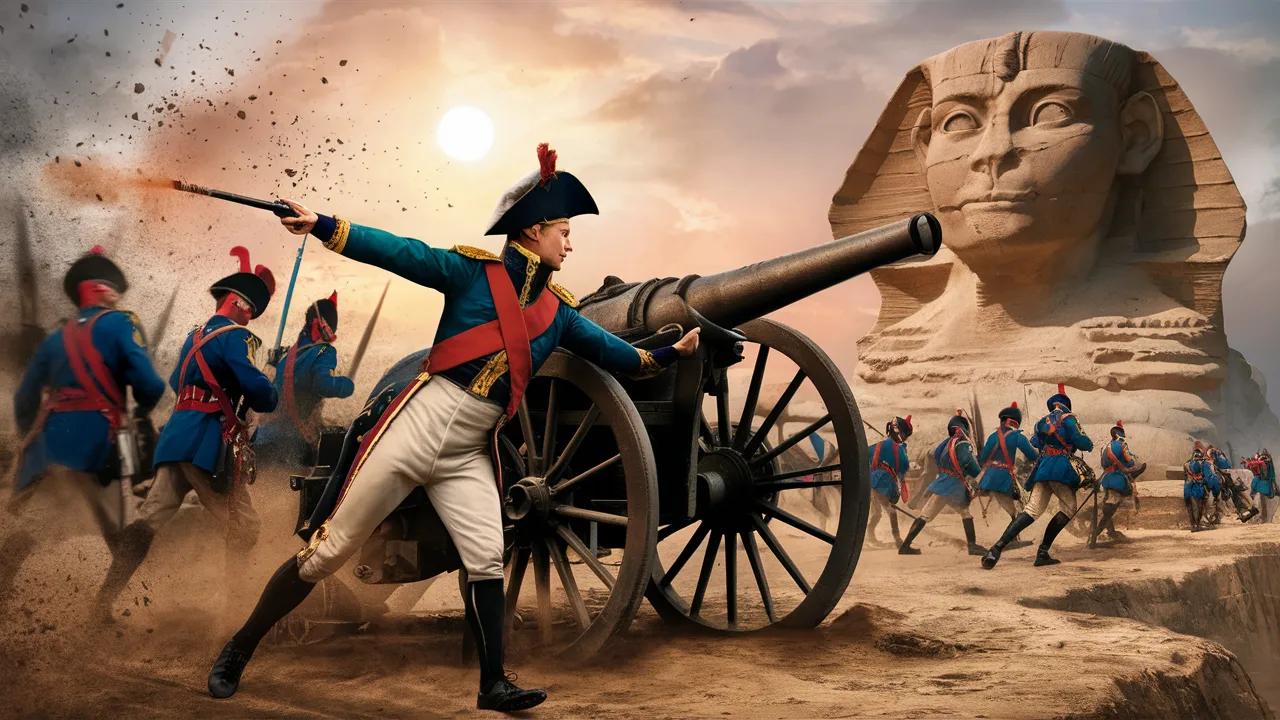17 Stubborn Myths about Napoleon Most People Still Believe

Did you know that much of what we think we understand about Napoleon Bonaparte might be based on myths? He's often remembered as a military genius and a power-hungry emperor, but there's more to his story, filled with unexpected twists and surprising facts that challenge the usual narrative.
17. He Was Short
Perhaps the most widespread myth about Napoleon is that he was extremely short, possibly due to the term "Napoleon complex" used to describe short people with an inferiority complex. In reality, Napoleon was around 5 feet 7 inches tall, which was actually above the average French male height at the time.
16. He Shot the Nose Off the Sphinx
A popular myth claims that when Napoleon laid siege to the village of Gizeh during his Egyptian campaign, his artillery fire damaged the famous Sphinx, shooting off its nose. However, depictions show the Sphinx was already missing its nose centuries before Napoleon's arrival.
15. He was Born in France
Many assume Napoleon was born in France, but he was actually born on the island of Corsica in 1769 when the island belonged to the Republic of Genoa. Corsica was later ceded to France, making Napoleon technically a foreigner.
14. He Always Wore His Hand in His Shirt
The iconic image of Napoleon with his hand tucked into his shirt was likely artistic license by painters rather than his typical pose. As an experienced military man, he would not have wanted to restrict his arms in such a fashion.
13. He Was Chronically Ill
While Napoleon did suffer periods of illness in his later years, especially after being exiled to St. Helena, there is no evidence he was chronically sick throughout his life. The resilience required for his military campaigns argues against this myth.
12. He Was Power Hungry
A common portrayal is that Napoleon was solely obsessed with gaining power and territory. However, many of his legal reforms and attempts at European integration suggest he had broader philosophical goals beyond merely amassing an empire.
11. He Always Rode a White Horse
Napoleon's horse at major battles like Wagram was actually grey, not the white steed he is often depicted on. The white horse was likely an idealized, symbolic choice by artists.
10. He Was Exiled for Life
Napoleon was indeed exiled twice - first to the island of Elba after his initial abdication in 1814, and then to the remote St. Helena after his final defeat at Waterloo. However, his exile to Elba was not intended to be permanent, and he was able to bribe his way off the island to return to France in 1815.
9. His Armies Were Massive
While Napoleon led very large armies for the era, descriptions of his "millions" of troops are greatly exaggerated. His forces at Waterloo numbered around 73,000, still huge for the time but far from a multi-million man army.
8. He Was a Strategic Genius
Napoleon was undoubtedly a brilliant military commander who made brilliant tactical maneuvers. However, the myth that he was a strategic genius who meticulously planned entire campaigns has been challenged, with some historians arguing he often reacted opportunistically to changing battlefield situations.
7. He Had a Sweet Tooth
For someone frequently depicted holding a trademark bicorne hat, you may expect Napoleon to be wearing foppish white gloves and indulging a sweet tooth. However, Napoleon disliked overly rich foods and had relatively simple tastes, avoiding sugary treats and preferring basic fare like soup, bread, and red wine.
6. His Relationships Were Scandalized
While Napoleon did have romantic relationships with a few mistresses, depictions of him as an overly licentious playboy are inaccurate myths. He was very discreet about his affairs and did not broadcast them publicly during his lifetime.
5. He Was a Dictator Like Hitler
One of the more pernicious myths links the authoritarian Napoleon to 20th century dictators like Hitler and Stalin. In reality, Napoleon's rule was quite different and more progressive, overseeing the liberal Napoleonic Code that expanded rights and secularizing policies.
4. He Crowned Himself Emperor
The famous painting depicting Napoleon crowning himself in Notre Dame implies he usurped the French monarchy and declared himself emperor. However, he had actually already been voted emperor by plebiscite, with the coronation merely being a ceremonial event.
3. He Was Hairy
Despite being called the "Corsican Ogre" by some, there is no evidence Napoleon was particularly hairy or unkempt in appearance. Contemporary accounts describe him as relatively kempt and well-groomed, undercutting the "beast" myth.
2. Josephine Was His One True Love
While their relationship was affectionate, the myth of Josephine as Napoleon's one true love is likely overstated. The romantic relationship between Napoleon and his first wife Josephine was likely more complicated than the enduring "great love affair" myth suggests. While there was certainly affection between them, sources indicate their marriage was strained by infidelity on both sides.
1. Napoleon Was an Atheist
Despite lacking strong personal religious convictions, Napoleon recognized Catholicism's influence over the French public. He strategically maintained a pious Catholic façade to unify the masses and increase his control. In 1801, he even signed a Concordat deal with the Pope restoring Church rights and status - a cunning political move to harness religion's power.
